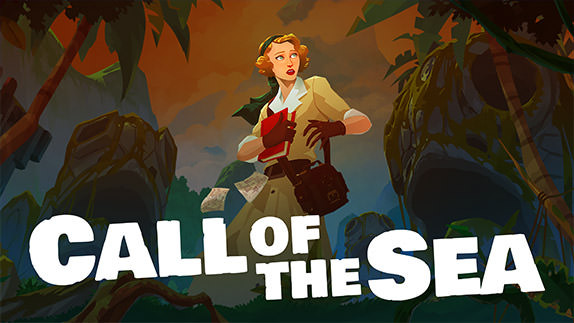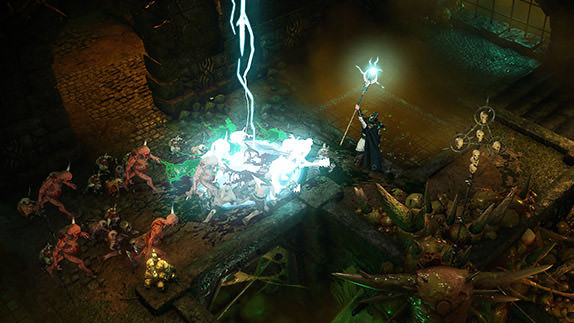Death's Gambit Review

 By Kevin Mitchell | August 23, 2018
By Kevin Mitchell | August 23, 2018
As much as I try to avoid making comparisons to other games in my reviews, the inspiration for Death's Gambit is adamantly clear within the opening minutes. From Software's Dark Souls franchise has an absolute grasp on the action role-playing game genre, and while that series profoundly focuses on pushing the boundaries of a 3D world, there have been a handful of titles looking to conquer a 2D landscape with a similar style of gameplay. The latest comes from Adult Swim Games and developer White Rabbit.
As a failed instrument of death in life (a soldier from the land of Vados named Sorun), you are reborn as an agent of Death himself, waging war against the Immortals of Siradon. Comprised of gothic architecture, the land of Siradon consists of tundras, dangerous caverns, and vast forests, all with their own environmental hazards to send you back to the grave. At the onset, you can customize your character, choosing from seven different available classes to fit your playstyle. Each class comes with its own primary weapon and starting stats, but any of them can equip and utilize a shield, which is vital in combating certain enemy types.
Much like in my attempts to play through the Souls series, I died an embarrassing amount of times in Death's Gambit. However, White Rabbit handles dying differently—a change that I think makes the game feel unique. Instead of losing all of your shards (souls) upon dying, you drop one of your plume feathers used for healing. You can return to the same location to recover it or spend your shards at the Death Idols where you rest (bonfires) to recover any that have been lost. While this itself is a different take, you'll experience new lore the game has to offer only by dying multiple times. Certain bosses and non-playable characters (NPCs) that you come across will treat you differently, most often mentioning or commenting on the fact that you simply will not stay dead. This allows you to slowly—and sometimes painfully—improve your stats, giving you a better fighting chance. Word of advice: boost your endurance stat immediately, as this increases your stamina pool, allowing you to attack or dodge more often before getting tired.
Death's Gambit combines platforming sections with combat, which may be slow or fast-paced, depending upon your currently equipped weapon. My first class was "soldier," utilizing a slow but mighty greatsword. It worked best when countering enemies, as the majority of unspeakable horrors faced can damage you before you even think about swinging at them. Instead, dodging through the attack and stabbing them in the back in a single motion proved the more efficient way to cut them down. The first secondary weapon you come across, a bow, is useful for chipping away at foes at range, but I mostly ignored it. Abilities that you unlock, which you can have three equipped at any given moment, are tied to your weapon. I found it slightly off-putting that the first weapon upgrade that dropped for me right before a boss was incompatible with the ability I was using. Abilities also use soul energy, which is acquired by merely attacking enemies but will slowly deplete if you aren't damaging anything over a set amount of time. One of the starting abilities for my class stabbed foes cleanly, providing a bleeding status effect simultaneously. As you progress, you are presented with talent points to activate various passive abilities across three individual branches.
Using your abilities at proper moments can be the key to victory, but find yourself facing the wrong direction or stuck in an animation, and you'll leave yourself vulnerable to attack. Although when used correctly, they can do severe damage to bosses, which are the holy grail for the genre. Learning patterns and being able to anticipate which attack is about to be used is the name of the game—which, if you are like me, will take numerous attempts to learn. As someone who hasn't played through and finished all of the Dark Souls titles, it may be different if you consider yourself a veteran of the series. The game tracks your deaths against each boss, with each one having multiple phases, typically changing attack patterns and spawning standard enemies to get in your way. I was surprised when I conquered the game's first boss, the Owlking, but immediately hit a wall when the game's exploration opened up and I had free-roam access to face different bosses. Although the result was the same against each one—my untimely demise—being able to keep some of your shards during these encounters helped tremendously. If you are looking for an additional challenge, you may face "heroic" versions of each boss. These buffed-up bosses flaunt further stat increases and new attacks that will have you second-guessing yourself.
On the downside, the control mechanics in Death's Gambit feel a bit archaic, and I was frustrated by my inability to accomplish basic tasks. At times I felt locked into a particular animation, while at others I could dodge mid-animation to avoid getting hit. I frequently couldn't complete a dodge, turn the opposite direction, and attack as smoothly as I should have been able to. It's almost as if hitting the buttons too fast limits what you can achieve. Not to mention, there is zero need to have a button being held down to climb up or down a ladder. The analog stick—as you can't use the directional pad to move your character—should be able to accomplish this task, with perhaps a shoulder button to drop off. I also didn't like having to use the d-pad to recover or pick up items, as it forces you to move your thumb from the analog stick. The difficulty seems to ramp up swiftly after the first boss, but that may just be from my lack of experience in these types of games.
Simply Put
Death's Gambit aimed to transition the Souls style of gameplay into an unforgiving 2D adventure, and for the most part, it has succeeded. However, I feel that the controls aren't as smooth or fluid as they need to be. Ranged foes seem to have an unfair advantage, being able to instantly lock on to your direction in a heartbeat. I also felt like I was fighting the controls every step of the way, making the experience that much harder, but I did appreciate the unique take on the genre. Dying doesn't mean the end of the world, and being able to watch new sequences and listen to additional dialogue after dying was a treat.
Note: Death's Gambit was reviewed on PlayStation 4. A digital copy of the game was provided by the publisher/developer.




